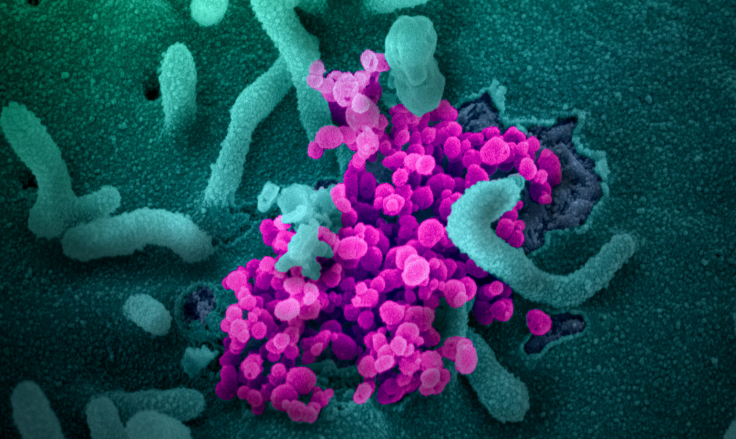The economy of the US has collapsed the in the past month amid the aggressive measures taken to slow down the spread of the deadly coronavirus or COVID-19, along with 22 million people filing for jobless benefits and most of the factories, stores and other businesses at a standstill.
The governors of Florida, Michigan and the other states outlined the probable steps on Friday for reopening their economies, which comes a day after the White House issued guidelines for helping states decide when to lift the lockdown orders and allow all the firms to restart their work.
Trump looking forward to reawakening the economy

President Donald Trump, a Republican who is running for re-election in November, touted the guidelines as a blueprint for a reawakening of the economy, saying growth would soar like a "rocket ship" after the restart. But the guidelines, and the ways in which experts say they fall short, suggest that revving activity back up to pre-pandemic levels will be anything but smooth or speedy.
States may be ready to end lockdowns once infections have declined for 14 straight days, availability of tests to detect the virus is stable or rising, and if there is enough hospital capacity to treat everyone who gets sick, the guidelines say. They also call on states to be ready to test all healthcare workers and anybody with symptoms, as well as to be able to trace contacts for people who test positive for the virus.
How many states are ready for that?
None, according to Harvard epidemiologist Bill Hanage, who was among the many experts who took to Twitter on Thursday to criticize the guidelines. Hanage says inadequate testing capacity is the main problem. The United States has reported more coronavirus infections than any other country, with about 680,000 cases and more than 34,000 deaths.
US testing has been delayed and chaotic largely due to bureaucratic roadblocks and mistakes at the federal level. Trump, who initially downplayed the threat of the coronavirus outbreak to the country, has pledged to ramp up testing. States are "far from being able to do enough tests to enable us to move to the next phase of responding to the pandemic," says Jen Kates of the Kaiser Family Foundation. She says there are no details in the guidelines on how much testing is needed.
State governments also need more people to track new infections through phone calls and visits. Alphabet's Google and Apple Inc are working together on software to make contact tracing easier. The software is expected to be available in mid-May. "Not one of the 50 US states currently has surveillance capabilities sufficient to enable case-based interventions at the necessary scale," Duke University researchers wrote in an extensive look at testing needs.
The White House guidelines don't provide any information on how to get there. Charmaine Yoest of the conservative Heritage Foundation think tank said the White House was right to leave decisions on reopening economies to state leaders. "It has to be done based on the data that applies to their communities and their workforce," she said.
But data on infections, and the means to deal with them, may be hard to come by. "There is no - zero, zip, zilch - way to upscale testing, PPE (personal protective equipment) production, hospital readiness, the public health workforce ... without robust federal leadership," tweeted Jeremy Konyndyk, senior policy fellow at the Center for Global Development. "States don't have the capacity or resources to achieve these things on their own."
'FALSE START' FEARS
The White House guidelines call for a staged reopening, which is consistent with recommendations from many experts. A study from McKinsey & Company, which is advising New York Governor Andrew Cuomo as he battles the nation's worst coronavirus outbreak, recommends opening a few sectors at a time, based on "both the risk of transmission and the relative importance" of each sector, as defined by the number of jobs and contribution to the economy.
The guidelines also call for schools, factories, shops and restaurants to function differently than before the pandemic, again broadly consistent with a wide range of experts who say that maintaining social distancing, wearing masks, and frequent hand-washing and cleaning are critical to keeping the public safe. But those practices will slow commerce.
As for reopening gyms and entertainment venues, which the White House plan suggests is possible in "Phase 1" of a restart, former US Food and Drug Administration chief Scott Gottleib urged caution. "Those may not be permitted until we have seen that work can safely return without a resurgence," tweeted Gottleib, who was FDA commissioner from 2017 to 2019 and was otherwise generally supportive of the guidelines.
Assuming the country weathers the first stage of a restart without a resurgence of coronavirus, it is not clear, based on the guidelines, how quickly states could move to the next phases - that is key to gauging how quickly the economy can rebound. If each of the three phases in the guidelines lasts just two weeks, that's "too fast," tweeted Tom Inglesby, director of the Johns Hopkins Center for Health Security.
It also may not be smooth. Economists warn that a "false start" - where the economy reopens, infections surge, and the economy needs to shut down again - could prolong the downturn. But governors of some states, including California and Idaho, say that's exactly what they'd do. And that would likely further slow economic recovery.
(With agency inputs)








